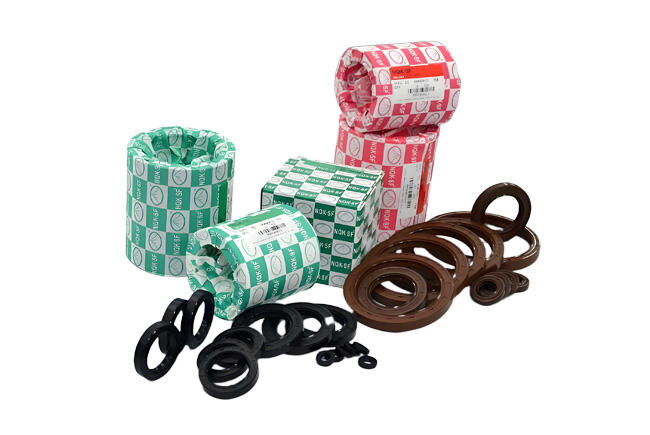Oil seals are vital components in machinery, especially in heavy-duty engines, transmission systems, and industrial equipment. While oil seals seem simple, when they fail, they can lead to a chain reaction of failures, such as bearing wear, lubrication failure, and operational instability. Understanding the reasons behind oil seal leaks can help prevent common issues in daily use.
1. Material Issues
The material of an oil seal directly affects its sealing performance. Common materials for oil seals include NBR (Nitrile Rubber), FKM (Fluoroelastomer), HNBR (Hydrogenated Nitrile Rubber), and PTFE (Polytetrafluoroethylene). Each material is suited to specific working environments, but if the material is not chosen correctly, the oil seal may age or harden due to exposure to high or low temperatures or incompatible oils, leading to leaks.
NBR is commonly used but performs poorly at high temperatures and may harden over time, losing its sealing ability.
FKM and HNBR are excellent for high-temperature environments but may suffer from cracking and aging if used in extreme cold or with certain chemicals.
PTFE is perfect for extreme working conditions, but it requires precise shaft surface matching. Improper installation or poor shaft fit can lead to leakage.
2. Improper Installation
Improper installation is another major cause of oil seal leaks. Many users neglect the installation details, leading to poor sealing performance and leakage. Common installation issues include:
Uneven Shaft Surface: The oil seal lip must make tight contact with the shaft. If the shaft surface has scratches, pits, or oil residues, it can wear out the sealing lip, causing leaks.
Shaft Misalignment: The shaft and the oil seal must be properly aligned during installation. Misalignment causes uneven pressure on the sealing lip, leading to leakage.
Excessive Force During Installation: Hammering the oil seal in place or applying excessive force can damage the sealing lip, causing cracks or damage that leads to oil leaks.

3. Environmental Factors
Oil seal performance is heavily influenced by environmental factors. High temperature, pressure fluctuations, chemical exposure, and vibration can all accelerate wear and lead to leaks.
High Temperature: Extended exposure to high temperatures causes the rubber to lose its elasticity, harden, and lose its sealing properties.
Pressure Fluctuations: Rapid pressure changes can deform the oil seal, causing leakage.
Chemical Corrosion: If the oil contains corrosive substances, long-term exposure will degrade the oil seal, eventually causing leaks.
Vibration: The vibrations from heavy machinery or vehicles can damage the oil seal, leading to failure and leakage.
4. Oil Seal Aging and Wear
Over time, oil seals naturally undergo wear due to constant pressure. Especially in rotating parts, the friction and wear are much higher, which can lead to cracks or surface damage, eventually causing oil leaks.
5. NQKSF is Solutions and Services
In the sealing industry, NQKSF offers professional solutions to address oil seal leak problems. We not only provide standard parts with fast delivery — including O-rings, oil seals, and other sealing products — but also offer customized services to meet specific application requirements. Our team helps design non-standard seals tailored to your operational conditions.
With over 30 years of experience, NQKSF has developed a deep understanding of optimizing sealing systems, reducing maintenance costs, and improving equipment reliability. From material selection and design to testing and production, we provide comprehensive support for all sealing needs.
 Hot News
Hot News